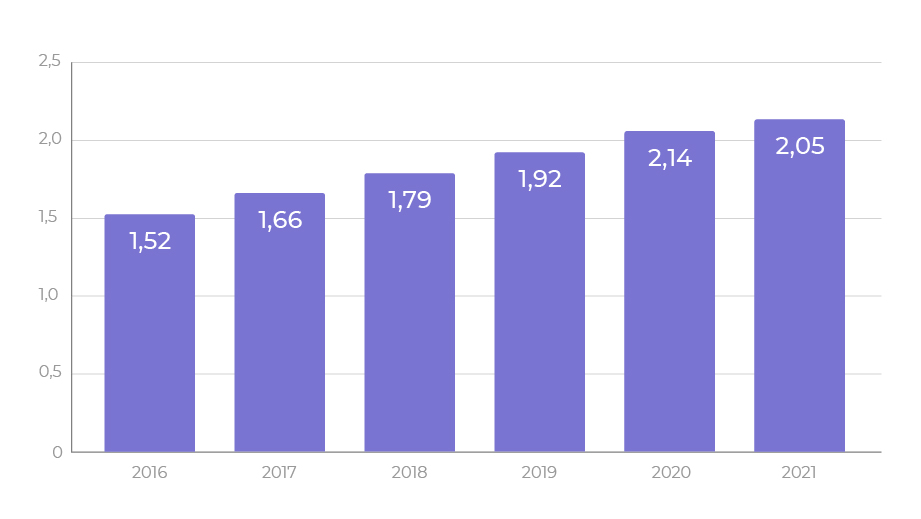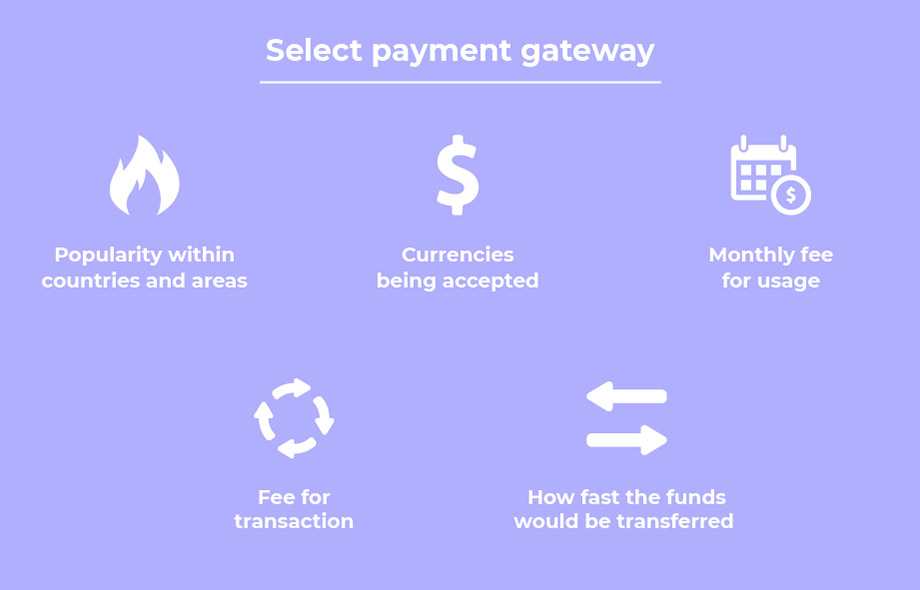By: Olga Str.
28 MAR 2019
1546
The development of E-commerce platform is one of the most preferred requests that Appus Studio receives from clients. Why? It isn't surprising that nowadays online shopping is enormously widespread. According to Statista, by 2021 over 2.14 billion people worldwide are predicted to order goods and services online, in comparison with 1.52 billion online consumers in 2016.

It gives freedom for online retailers to earn millions every year. It makes E-commerce marketplaces in high demand. Let’s imagine that you’ve already defined your product line, checked out your opponents, contacted your future suppliers and wrote a business plan. So, let’s review 6 steps you should do for building a prosperous E-commerce platform.
Step # 1. Choose your brand name and purchase a domain name for the e-commerce platform
Firstly, it’s crucial to come up with a catchy, unique and exclusive brand name for your online retail business which will stand out you in the market and help the main idea of your platform to be identified. Then, you need to select the most convenient, unique, free and ready-to-use domain name. With its help, your brand will be completely recognized and become a base for your online identity. Try to make it short, use the words which bring the main sense of your business and check if it doesn’t exist already.
As soon as you’ve chosen the tailor-made domain name, it doesn’t take too much time to buy and register with such the most popular domain registrars as GoDaddy, Domain.com, Namecheap, Hostgator, etc.
Step # 2. Find a development vendor to create the e-commerce website
Now, it’s time to search for developers who’ll build your future platform in the most proficient way and in the shortest time. Of course, it’s up to you to choose a company or freelancer for this job, but we highly recommend you to make the research about their experience in building E-commerce marketplaces. Also, search the references on their latest projects and review the clients leave after working with them on their websites or on such platforms as Clutch and Goodfirms.
Step # 3. Select a model for e-commerce platform development
There are actually two approaches for building an E-commerce website according to your expectancy, time and budget:
1. Working with the ready-to-use solution as WordPress (with WooCommerce plugin), Shopify, Magento, etc. and set it up according to your desires pretty soon. Even though the template website is a simple and cost-effective solution, it isn’t as adjustable and adaptable in terms of design and storefront as a custom website. Therefore, there would be some limitations in user experience and your platform might be similar to someone’s else.
Moreover, if you decide to modify your website and add some features in the future, some issues might appear due to some limitations of the templates and their plugins. However, for small business and if you're limited in time and budget, a ready-to-use solution is a good option.
2. A customized website is more flexible and scalable and suits perfectly almost for every business’s needs. There aren’t any constraints in terms of design and functionalities and you’ll be able to create a unique and creative website to generate more traffic to it. It helps to engage more customers and stand out from the competitors. Also, it will be much easier to adjust your website as your business will grow in the future, in comparison with the template. Another important fact is that customized website would fit any kind of device, while the ready-to-use template doesn’t give you such a guaranty.
However, since more coding from the development side and more involvement from the customer's side is needed, development of the custom website is a more expensive and time-consuming process. That’s a good option if you consider building a comprehensive platform being able to be transformed in the future according to your business’s needs.
Step # 4. Initiate SEO and marketing strategy for your marketplace
It’s highly recommended to start your SEO and marketing strategy as earlier as possible, before even launching your website. There are might be a lot of products similar to yours being sold on such E-commerce giants as Amazon, eBay, Alibaba, Zalando, etc. or on businesses just across the street. Therefore, organizing marketing and SEO strategy is vital to bring as more traffic as possible to your website and, as a result, define yourself among other competitors. Ideally, to keep the ball rolling, set marketing and SEO strategy up simultaneously with your website development.
Also, you need to realize clearly who is your target audience. Basing on that make research and choose the most significant marketing channels and tools to keep the focus on from the earliest moment of the online presence of your business.
Step # 5. Define shipping and storing methods for your e-commerce platform
Having found out your main products line on your platform, it’s very important to specify storing and shipping options for them. Depending on how well your goods are packed and delivered, the level of customer experience grows up. Therefore, the packaging and shipping process needs to be planned very accurately.
Firstly, determine the shipping services you'll cooperate with and then discuss them with the manufacturers. Secondly, figure out the price for shipping (e.g. if it depends on the size and the total cost of the order, amount of items, customer’s location, etc. or if there are any free option available). That's not a secret that it influences a lot on the customer’s impression from your service and their purchasing power in the future.
Step # 6. Choose a payment gateway for your marketplace
As an owner, you need to provide your customers with a reliable, safe and comfortable payment system inside your E-Commerce platform. Choose the most convenient payment solutions according to both, your clients’ and your business’ needs. Figure out if there would be only e-payments (e.g. PayPal, Stripe) or you want to accept credit/debit cards and mobile payments (e.g. Apple Pay, Google Pay) as well.
Furthermore, you should consider the popularity of the payment solutions in the countries and areas you’re going to serve. Prioritize them depending on the following criteria: currencies which need to be accepted, the monthly fee for using, transaction fee and how fast the funds would be delivered to your account.
In conclusion
Taking everything into account, creating your online retail business isn’t easy, but inspiring at the same time. Having selected the products and services to be sold via your platform, plan carefully packaging, storing and shipping options and implement the most convenient payment solution according to your clients’ and your business’s needs. While developing a catchy website and optimizing it according to your desires, stay focused on its promotion and the marketing and SEO strategy.
Need help in choosing the most convenient model for building your future E-commerce platform? We are recognized as a top E-Commerce Design & Development Company on DesignRush and we will be more than happy to provide you with a free consultation.
Good luck with your project!
 Services
Services
 Work
Work
 Company
Company
 Blog
Blog
 Contact
Contact








